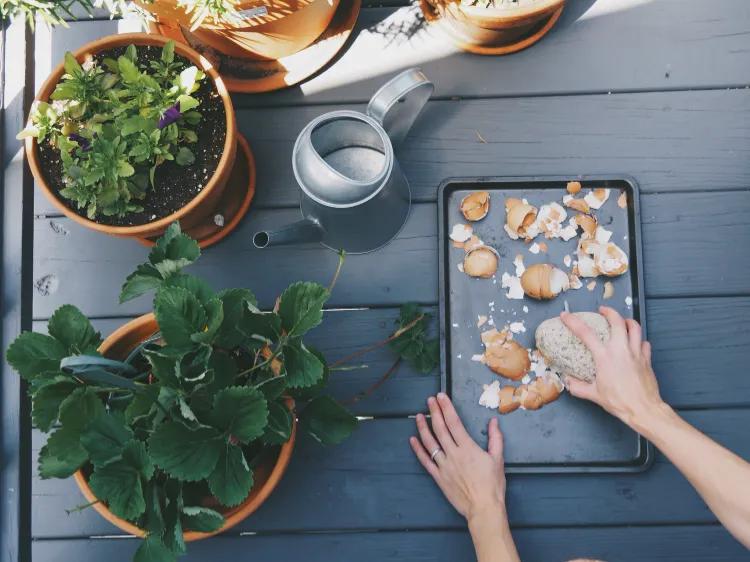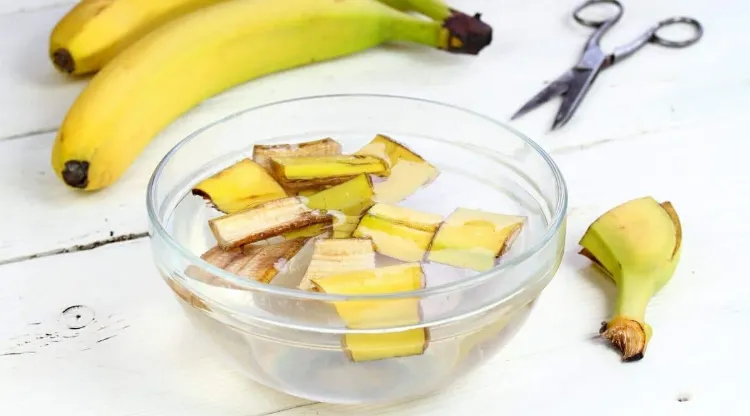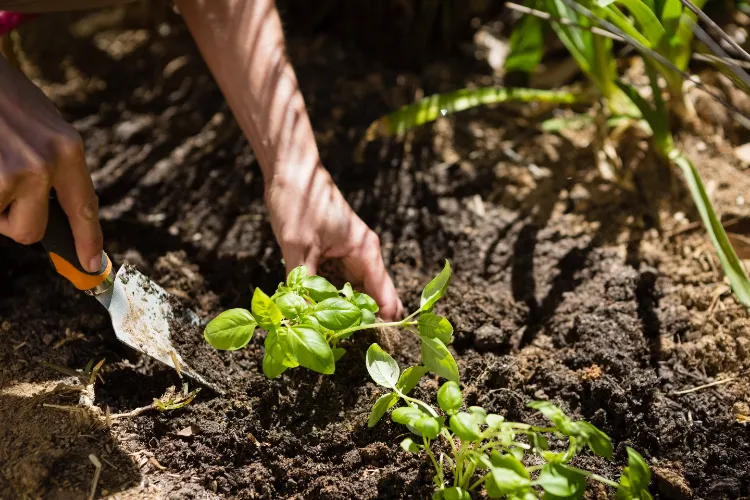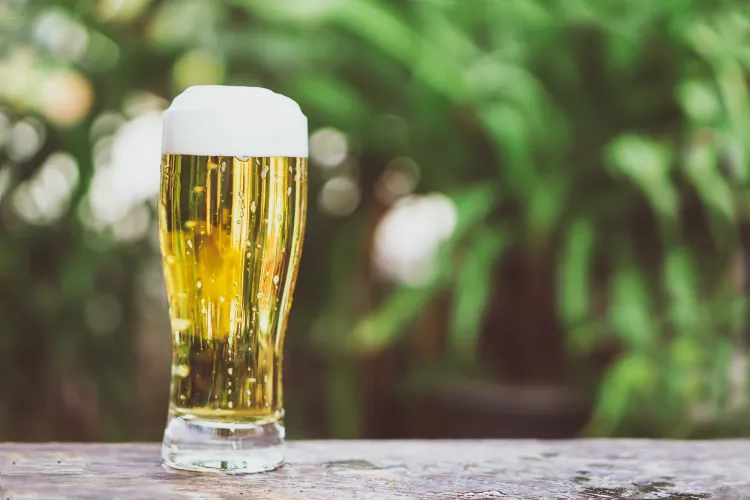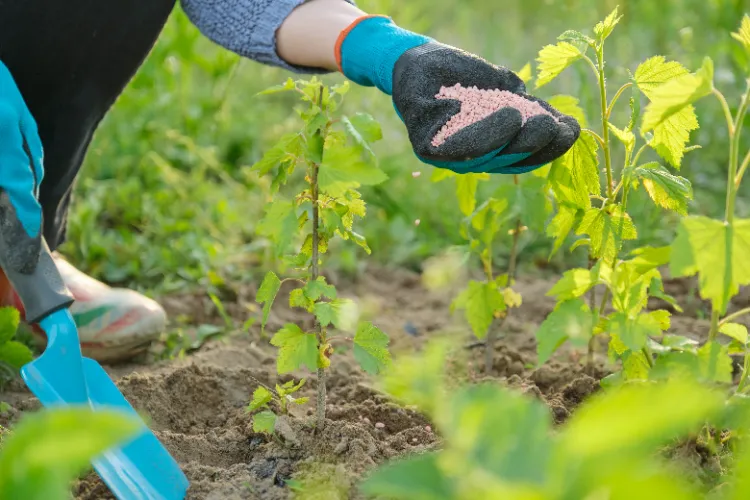Is there anything nicer than enjoying the wonderful weather in your own garden? Gardening is fun and good for the mind and soul. Sustainability is one of the biggest gardening trends of 2022 and more and more hobby gardeners are choosing to grow their own fruit and vegetables. After all, everything from your own cultivation tastes much better. In addition to sun, air and water, the plants also need sufficient nutrients for magnificent flowering and for the plants to deliver a high-yield harvest. You get this easily when you fertilize. However, you should not immediately look for chemical agents from the store. To save money and stimulate optimal plant growth, you could use kitchen waste as fertilizer, for example. Whether banana peels, eggshells, coffee grounds or rhubarb leaves – organic waste is full of nutrients and should not be thrown away. How exactly fertilizing with kitchen waste works and which method is suitable for which plants is explained in our article.
What Is Important to Know When Fertilizing with Kitchen Waste?
Food waste has become a global problem in recent years and a whole mountain of food ends up in the bin every year. Some kitchen waste is too good for the garbage and can be used in many different ways. For example, cucumber skins can help you get rid of ants. Water the plants with stale beer? Using kitchen waste as fertilizer is undoubtedly one of the biggest garden trends of 2022.
When you want to boost the growth of the plants, you should only use organic fruit and vegetable leftovers for fertilizing with kitchen waste. Exotic fruits in particular, such as bananas, are often exposed to large amounts of insecticides and fungicides. It is also important that you know the pH of the soil. To prevent any mold and to ensure that the nutrients are better absorbed, you should first chop up the leftovers and dry them well. A layer of mulch is also ideal to protect the soil from drying out.
Also read: 5 Ideas on How to Reuse Pickle Juice
Kitchen Waste as Fertilizer: Fertilize Plants with Coffee Grounds
Next time you’ve had your morning espresso, don’t throw away the coffee grounds. Coffee not only awakes people, but can also have a positive effect on our plants. Coffee grounds contain potassium, phosphorus and nitrogen – active ingredients that are essential for the healthy growth of plants. While potassium and phosphorus stimulate flowering, nitrogen promotes shoot growth. To use coffee grounds as fertilizer, you should first collect them and let them dry well. Then either mix it with the potting soil or sprinkle it under the plant and you’re done – that’s how easy it is to use kitchen waste as fertilizer. You can use coffee grounds to fertilize the following plants:
- roses
- geraniums
- hydrangeas
- blueberries
- rhododendron
- fuchsias
- azaleas
Egg Shells as Plant Fertilizer
Eggs are ideal for a balanced breakfast and the egg shells also provide our plants with a good “meal”. Egg shells are 90% calcium, making them perfect for fertilizing with kitchen waste. Calcium improves nutrient uptake and is ideal for regulating the pH of soil. In addition, other important nutrients are hidden in the eggshell, such as copper, phosphorus and iron, which contribute to a high-yield harvest. This natural fertilizer is ideal for garden plants that are mainly watered with rainwater. But before you use egg shells as plant fertilizer, you should first check the lime content of the soil and water. If the value is too high, it is better not to use this method.
To use eggshells for fertilizing with kitchen waste, you should first crush them into very small pieces. Rinse the eggshells thoroughly to make sure there are no yolks or albumen residue on them. Otherwise you can attract bugs and we don’t want that, right? After crushing the egg shells, work them into the top layer of soil. Alternatively, you can make a natural liquid fertilizer by adding the shells to the irrigation water.
Egg shell fertilizer is ideal for the following plants:
- lavender
- lilac
- chives
- geraniums
- Christmas roses
- delphinium
- cloves
Fertilize Your Plants with Banana Peels
Bananas are ideal for a power breakfast and the banana peels themselves are too good to be thrown away. They contain a lot of important nutrients that benefit our plants and stimulate the formation of flowers and leaves. These include calcium, potassium, magnesium, as well as sulfur and nitrogen in small amounts. Banana peels are ideal for fertilizing with kitchen waste, especially for flowering perennials and roses. However, to avoid pesticides and fungicides getting into the soil, you should only use organic bananas. And this is how banana peels can be used as fertilizer:
- First, chop the banana peels with a knife or in a blender. The smaller the pieces, the faster the nutrients reach the plants.
- Let the banana pieces dry in the sun for a few hours and then work them into the soil.
- Alternatively, you can make a banana stock by soaking the peels in water for 24 hours. Then strain and water the plants as usual.
How to Use Rhubarb Leaves as Plant Fertilizer
Whether as a mousse, compote or a juicy cake – rhubarb is an essential part of summer. But instead of throwing away the inedible rhubarb leaves, you can use the kitchen waste as fertilizer. A potassium deficiency can make the stems or leaves of your plants turn yellow. And because the rhubarb leaves are rich in potassium, they’re ideal for a natural plant fertilizer. To stimulate plant growth and support leaf sprouting, make a rhubarb leaf stock and then use it as a natural fertilizer.
How to make your own rhubarb leaf stock:
- First chop the leaves with a knife and put them in a pot with water in a ratio of 1:1.
- Bring to a boil and remove the pot from the stove.
- Let the leaves steep for 30-40 minutes and then strain through a sieve.
- Water the plants with the collected water.
Rhubarb leaf fertilizer is ideal for vegetable plants that have a higher potassium requirement. These include, for example, celery, zucchini, tomatoes and potatoes.
Can You Fertilize Plants with Beer?
Got a stale beer in the fridge? Then don’t throw it away! You can actually use it to fertilize with kitchen waste. Even if it no longer tastes good, it is rich in valuable nutrients that stimulate flowering and prolong life. Simply mix the beer with water in a ratio of 1:2 and water your plants once or twice a month. Beer as a fertilizer is ideal for all house, balcony and garden plants that are exposed to a lot of light in the summer months.
Also read: 5 Options for Eco-Friendly and Natural Nitrogen Fertilizer for Plants





